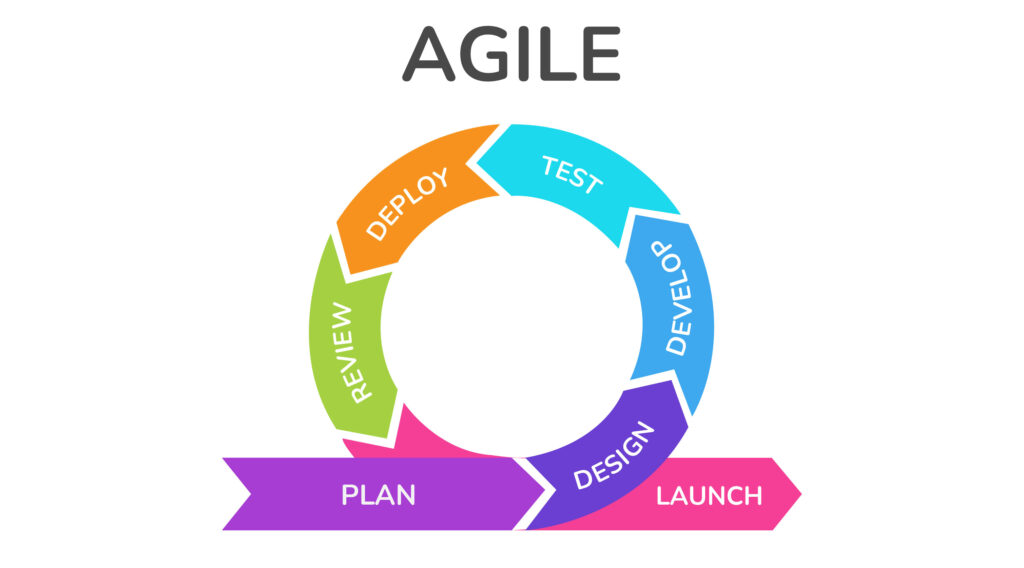In the fast-paced world of software development, agility is not just a virtue; it’s a necessity. The Agile methodology has emerged as a beacon guiding developers through the intricacies of modern software development. This article delves into the principles, practices, and benefits of Agile, showcasing how it acts as a catalyst, accelerating software development lifecycles and fostering a culture of adaptability and collaboration.

- Agile Principles: A Manifesto for Change: At the core of Agile methodology lies the Agile Manifesto, a set of guiding principles that prioritize individuals and interactions, working solutions, and customer collaboration over rigid processes and documentation. This manifesto sets the tone for an adaptive and customer-centric approach to software development.
- Iterative Development: Embracing Continuous Improvement: Agile emphasizes iterative development, breaking down the software development process into smaller, manageable increments. Each iteration, or sprint, results in a potentially shippable product, allowing for continuous testing, feedback, and improvement throughout the development lifecycle.
- Cross-Functional Teams: Collaboration in Action: Agile methodology encourages the formation of cross-functional teams, bringing together individuals with diverse skill sets to collaborate on a project. This collaboration fosters collective ownership, knowledge sharing, and the ability to adapt to changing requirements with agility.
- User Feedback: A North Star for Development: Agile places a premium on user feedback, considering it a vital compass guiding development efforts. By regularly seeking and incorporating user input, developers ensure that the software aligns with user expectations and delivers real value, leading to more successful and user-friendly products.
- Scrum Framework: Structured Flexibility: The Scrum framework is a popular implementation of Agile methodology, providing a structured yet flexible approach to project management. Scrum divides work into time-boxed iterations, or sprints, with defined roles, ceremonies, and artifacts, enabling teams to maintain focus and adaptability.
- Kanban Method: Visualizing Workflow Optimization: Kanban, another Agile methodology, is centered around visualizing the workflow on a Kanban board. It emphasizes continuous delivery, workflow optimization, and minimizing work in progress, providing a transparent and efficient way to manage tasks throughout the development lifecycle.
- Adaptive Planning: Responding to Change Effectively: Agile embraces adaptive planning, recognizing that change is inevitable in the dynamic landscape of software development. By regularly reassessing priorities and adapting plans, teams can respond to shifting requirements, technological advancements, and market dynamics more effectively.
- Continuous Integration/Continuous Deployment (CI/CD): Automated Efficiency: CI/CD pipelines are integral to Agile methodology, automating the testing, integration, and deployment processes. This automation accelerates development lifecycles, reduces errors, and ensures that working solutions are delivered consistently and rapidly.
- Emphasis on Delivering Value: Beyond Features to Outcomes: Agile shifts the focus from merely delivering features to providing tangible value. By aligning development efforts with business goals and customer needs, Agile ensures that each iteration delivers meaningful outcomes, fostering a more purposeful and impactful development process.
- Retrospectives: Learning from Every Sprint: Agile promotes a culture of continuous learning through retrospectives at the end of each sprint. Teams reflect on what went well, what could be improved, and implement changes accordingly. This iterative feedback loop contributes to ongoing process enhancement and team growth.
Conclusion:
Agile methodology stands as a powerful force in the realm of software development, redefining how teams approach projects and accelerating development lifecycles. By embracing Agile principles, iterative development, cross-functional collaboration, and adaptive planning, software development teams can navigate the complexities of the modern landscape with agility and efficiency. As the coding chronicles continue, Agile remains a driving force, propelling the industry forward and ensuring that software development remains responsive, customer-centric, and ready to meet the challenges of tomorrow.

